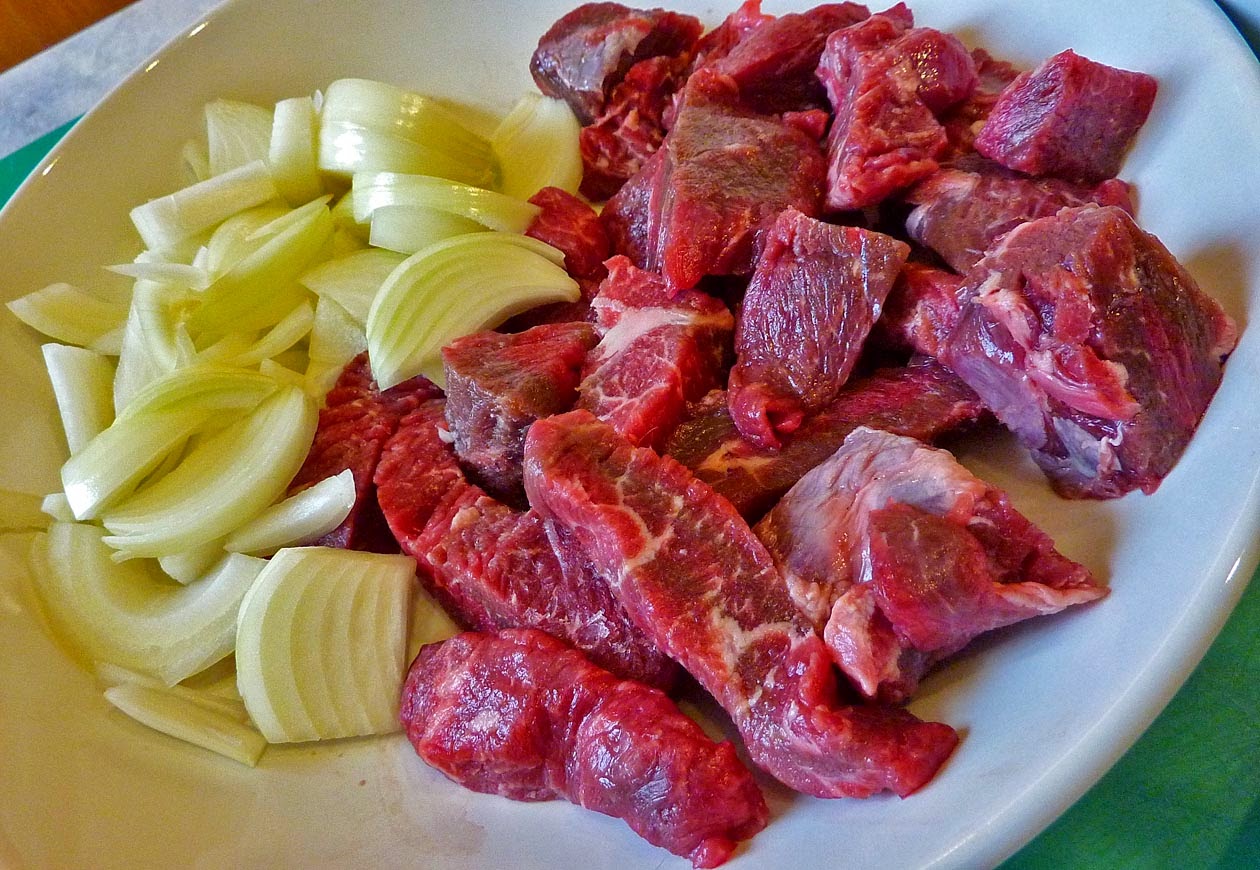Linguine was one of the things we enjoyed being able to buy at the Dia store in Saint-Aignan, which closed down — along with the rest of Dia's supermarkets in France — a few weeks ago. I have to check to see if we can still find the pasta called linguine — like spaghetti but slightly wider — in the other local supermarkets where we shop. (Carrefour has bought all of Dia's 800 stores in France, it seems.)
Anyway, spaghetti or some other pasta would work too. Other than that, all you need is onions and garlic, the French clams called palourdes, some olive oil, some white wine, and (almost optionally) some fresh herbs. This is a dish we call "linguine with white clam sauce" in America. In Italian, it's spaghetti alle vongole — spaghetti aux palourdes in French.
By the way, thanks to CHM for the beautiful photos you see here, which he took as we made the linguine with white clam sauce.
It was a good idea that Walt had a few weeks back, and CHM and I were immediately enthusiastic. Actually, the original idea wasn't based on palourdes (European bivalves that resemble small North American clams) but on lavagnons (sometimes called lavignons), another bivalve that we had enjoyed cooking and eating when we went to the island of Oléron in 2008.
The seafood vendor at the Saturday market on the old village square in Saint-Aignan comes up here from the Oléron area, which is on the southern Atlantic coast between the cities of La Rochelle and Bordeaux. And Walt had seen lavagnons on sale there a few weeks earlier, but hadn't bought any. He set out to buy some on the Saturday when we ended up with palourdes and linguine with white clam sauce. It's a long story. One day soon, we'll find lavagnons again.
Bivalves like clams, palourdes, the similar French molluscs called praires, cockles (coques), and lavagnons can be full of sand. They feed by siphoning water and sand into their shells, digesting the plant and animal plancton that get sucked in with the mixture, and then expelling the water and sand out another tube. If you catch them when they have a lot of sand in their digestive tract, they can be gritty.
What do you do to cleanse them? Well, the best method is to put the clams in a large quantity of cold, heavily salted water and just let them sit for an hour or two. They will start feeding, and soon they will have expelled any sand they had ingested. You can put a spoonful of cornmeal in the water, and they will feed on that, accelerating the cleansing process (theoretically). You'll notice the water going cloudy and gray as the clams feed. Then just rinse them under running water and they are ready to be consumed.
To cook them, "sweat" some chopped onions and garlic in butter or oil in a big pan. Then put the clams or palourdes, whole in the shell, into the pan, and pour on a cup of white wine. Cover the pan tightly, turn up the heat, and wait five minutes while the clams shells pop open and the clam flesh cooks. If you cook them too long, the flesh gets rubbery, so be careful.
Before cooking the clams, cook a package of linguine, spaghetti, or other pasta according to the standard directions. When the clams are done, pour the contents of the pan over the hot pasta in a big bowl and wait a minute for the pasta to more or less absorb the cooking liquid (clam juice, white wine, and oniony/garlicky olive oil). Grind some black pepper over all, or even add a pinch of dried hot red pepper flakes. Don't forget the fresh herbs — we used cerfeuil (chervil) from the garden. Stir. Eat. Enjoy.
Thanks again to CHM for all these photos...
Why is it called "white clam sauce"? Do you use white clams? No, it's white clam sauce to distinguish it from a slightly different version which you make by adding a little tomato sauce or paste to the pan of clams with the white wine. That makes pasta with red clam sauce. It's good too.





















































